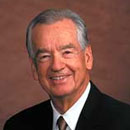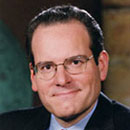Colorado's economy set the pace for years; now it is playing catch up
Published in Business News
Colorado’s economy was a top performer coming out of the Great Recession and in the years that followed. And while it should continue to grow next year, signs of fatigue were hard to miss this year as it veered way off course.
Between 2008 and 2023, Colorado ranked among the top six states nationally on important measures from GDP growth to employment and labor force gains to rising personal incomes and home price appreciation, according to the 2025 Colorado Business Economic Outlook from the University of Colorado Boulder’s Leeds School of Business.
On that last one, Colorado led the nation with an average annual home price appreciation of nearly 6% over the prior 15 years, a period that included the housing bust. Now it ranks 49th, which may not be such a bad thing given the heavy toll the deterioration in housing affordability has taken on many residents, not to mention the state’s attractiveness to outsiders.
The state’s economic underperformance became noticeable this decade, but initially, it could be written off as fallout from the pandemic. Just how far the state has veered off course, however, became harder to deny this year.
Economic growth, measured by state GDP, went from fifth best in the nation over the prior 15 years to 41st this year. Personal income growth, a driver of rising living standards, went from third best in the nation to 39th. Colorado has gone from top-notch to average on most measures and below average on a few.
“We are expecting continued growth in 2025 but it is at a slower rate,” said Brian Lewandowski, who helped prepare the Outlook as executive director of the Business Research Division at the Leeds School.
More than 140 experts contributed to the Outlook, which is in its 60th year. It represents the most comprehensive forecast of the Colorado economy available and is being presented at 12:30 p.m. Monday at the Grand Hyatt Denver.
Colorado remains competitive on employment growth, slipping from sixth over the prior 15 years to ninth this year. Colorado should gain about 46,800 jobs this year, a 1.6% growth rate, with the Outlook forecasting a gain of 36,700 jobs, a 1.2% growth rate, next year. Colorado’s unemployment rate is averaging 3.9% this year, up from 3.2% last year, and is expected to rise to an average of 4.3% next year, still low by historical standards.
But job gains this year have skewed toward lower-paying sectors like government, education and health care, and leisure and hospitality.
Construction, manufacturing and information are on track to lose jobs this year.
Hiring in professional and business services, a high-paying sector that includes engineers, lawyers, accountants, and research scientists, is still positive but down sharply from the past few years.
That important sector, the state’s second-largest, has consistently added 10,000 or more jobs a year in Colorado, Lewandowski said. Gains have fallen from 30,300 in 2022 to 14,400 in 2023 to 5,800 this year. The Outlooks calls for an anemic increase of 5,000 next year.
If that pans out, it would mark the worst stretch for job creation in that sector since the Great Recession, aside from the face plant that happened in 2020 during the pandemic. Fewer high-paying jobs being added helps explain why personal incomes aren’t growing as fast as they have in the past.
The Outlook calls for only one sector to lose jobs next year — information. Construction hiring, which has been weak the past two years, should rebound by 6,000 positions as lower interest rates encourage more activity, especially in infrastructure. Manufacturing hiring in the state should see a bump as federally-supported projects in battery storage and semiconductors move beyond the construction stage to hiring staff.
Future hiring will have to traverse a demographic divide. Colorado’s population growth went from sixth fastest in the nation in the prior 15 years to 17th and net domestic migration, or the number of people moving in from other states less those leaving, has flattened and the outlook for international migration is uncertain.
The state’s population is forecast to rise by 51,400 people next year, the equivalent of adding another Fremont County, with net migration, a good share of it international, expected to provide 32,700 of that gain. The state will edge closer to 6 million people but not quite get there.
Labor force growth, a measure of the economy’s capacity to fill jobs, went from sixth best to 29th in Colorado. About 40,000 workers a year are retiring in Colorado and that exodus will continue through the rest of the decade.
Lewandowski said the state needs to cover not only the gap from retiring workers but meet the demand coming from new jobs. The number of residents under age 17 shrank last year, while the number of residents over 65 rose by 3.2%, more than five times the overall pace of population growth.
“Mathematically it gets difficult to make all of that reconcile. It is not clear where all of those workers will come from,” he said.
One answer to labor shortfalls, which are a looming problem in much of the developed world, is to improve productivity or to generate more output per worker. As a leader in quantum computing and an innovator in artificial intelligence, Colorado stands poised to benefit.
“We are poised for the highest productivity decade in U.S. history. When we figure out how to do the AI stuff correctly, Colorado is a major player in that,” said Richard Wobbekind, an associate dean and senior economist at CU.
One unknown next year involves what policies the incoming Trump administration will put in place. The state hosts an above-average concentration of federal employment and federal labs, and tighter budgets and headcount reductions could cut into those.
On the minus side, the Trump administration could move the Space Command from Colorado Springs to Huntsville, Ala., which would be a huge blow to the state’s aerospace aspirations. On the plus side, it could move more jobs out of Washington, D.C., which it attempted to do when it relocated the headquarters of the Bureau of Land Management to Grand Junction, a move the Biden administration reversed.
Labor shortages could worsen if mass deportations, which may start in Aurora, are carried out, leaving positions unfilled and potentially driving up wages. Broad tariffs could trigger trade wars, which would likely increase the costs of imported goods, potentially reigniting inflation and forcing the Federal Reserve to keep interest rates higher for longer. However, deregulation and lower taxes could also give a boost to business activity and hiring.
©2024 MediaNews Group, Inc. Visit at denverpost.com. Distributed by Tribune Content Agency, LLC.












Comments